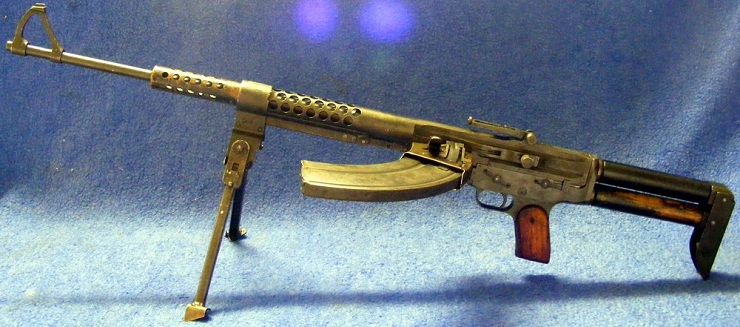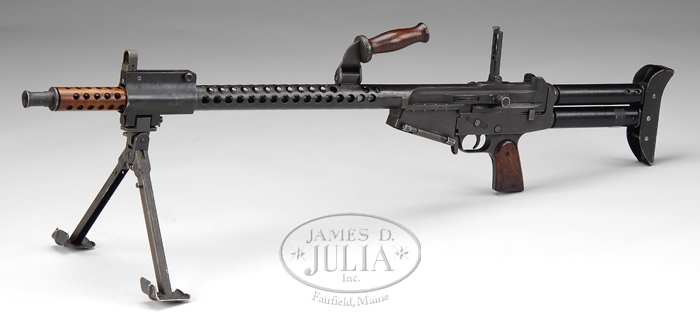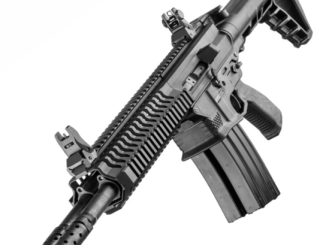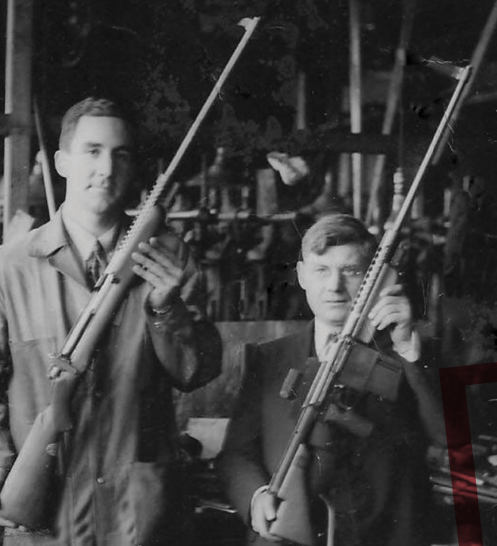I’ve always been interested in Israeli firearms, because that nation has had more need to actually use their arms in combat in the past 50 or 60 years than almost any other nation. Couple that with a relatively small military bureaucracy, and you get a very interesting insight into what works and what doesn’t.
The Israeli Dror (“Liberty”) light machine gun was a variation of the M1944 Johnson light machine gun. Israeli was in desperate need of weapons in the late 1940s, and several of Melvin Johnson’s engineers sympathized with the Jewish cause. They helped smuggle the complete technical package on the Johnson LMG to the Israeli Hagannah despite the formal arms embargo instituted against Israel.
The Johnson (and thus also the Dror) is a recoil-operated machine gun, firing from an open bolt in full auto and from a closed bolt in semiauto. It uses an 8-lug rotating bolt which would go on to be used by Eugene Stoner in the AR15 years later. This is complex to manufacture, but offers a strong lockup. Upon firing, the bolt and barrel recoil together about 3/16″ backwards, until a cam on the top of the bolt engages a ramped surface inside the top of the receiver, which forces the bolt to rotate, unlock, and continue rearwards under inertia. Ejection of the empty case is done by a plunger ejector in the bolt face (another feature which found its way into the AR).
First Pattern Dror
The first batch of Drors made underground in Israel were chambered for .303 British, to make use of the available stocks of that cartridge. These first guns bear a very close resemblance to the Johnson, including the distinctive tall front sight and barrel release actuated by a cartridge or punch. They used a side-mounted sharply curved 20-round single-stack magazine like the Johnson .30-06 magazine. These models suffered from feeding problems probably due to the rimmed nature of the .303 cartridge, and only 800-1000 were made.

Second Pattern Dror
A second pattern of Dror was designed and built chambered for 8×57 Mauser, another caliber the Israeli has in large quantity. The use of a rimless round solved many of the issues from the first pattern guns. They also incorporated a number of other design changes, starting with a bottom-mounted box magazine (modified US BAR magazines were used). The barrel release was also improved – it was now a lever mounted on the front barrel bearing (which appears to be a gas block at first glance). Pushing in on the butting and lifting the lever up allows the barrel to be pulled forward out of the gun. The distinctive orange/brown fiber shround on the front section of the barrel was added as a heat shield, so that a hot barrel could be removed without needing a tool or insulating glove.
Other improvements included protective ears for the rear sight (folding down towards the read of the gun), a carry handle on the barrel shroud, and a folding cover to close the magazine well when not in use. Typical of Israeli weaponry, these are all eminently practical modifications.

More second pattern Dror photos:
[nggallery id=120]
Combat Usage
Ultimately, the Dror saw no large-scale combat use. Feeding issues with the first pattern gun prevented it from seeing widespread use in the 1948 War of Independence. Even with the second pattern improvements, the Dror still retained the fundamental problem of the Johnson LMG – it was prone to malfunction if not kept clean. The many-lugged rotating bolt was made with fairly tight clearances, and there was very little excess space inside the receiver for dirt or sand. As a result, fouling quickly affected performance. Rather than continue development of the Dror, it was decided to find alternative weapons instead. As a result, use of the Dror was limited mostly to training.




Pity it didn’t work better: it’s a lovely rifle. I had never even seen the 2nd version until today. Thanks!
An instruction manual would be interesting to see about this amazing gun..
Stock design is interesting ! Are there 2 buffers …or any at all?
The Israeli’s also had trouble machining the parts. They produced Sten guns instead. Then the UZI.
Much easier to make than a Johnson LMG.
Erg interessant wapen, erg benieuwd of deze zeldzaam zijn en duur om te kopen met uiteraard de juiste papieren.
Typical Johnson, an over hyped piece of garbage. Whatever was paid for it was too much